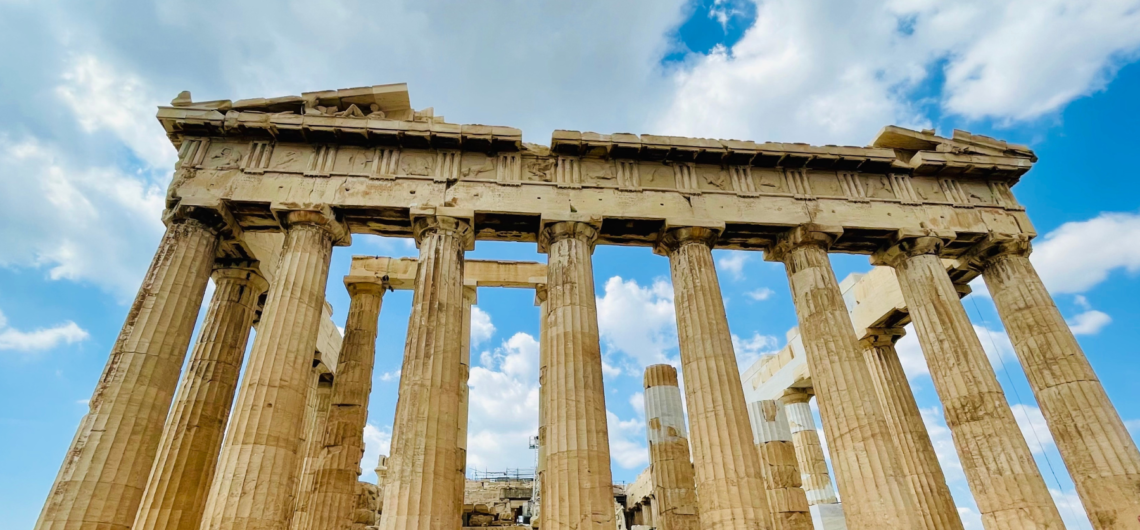What’s the difference between a Greek antiquity and an antique? An antiquity has been unearthed by archeology. An antique hasn’t. The former is usually much older, some pieces dating as far back as 4,000 years. I embarked on a month long project to replicate an historic Greek pot at a clay studio. Within the first 30 minutes, I realized how impressive it is Europe’s first great civilization turned out countless sophisticated pieces using only rudimentary tools. Even with a potter’s wheel and stellar teacher, I couldn’t recreate an urn fashioned after ones made during the age of Plato and Socrates. No matter your artistic ability, I highly recommend once in your life attempt to demystify an antiquity. Learn what it took to bring clay vessels, stone sculptures, gold jewelry, or marble columns to fruition in the Minoan or Bronze age. Here are tips for learning to replicate a Greek antiquity! Recreate Greek Pottery This is the pitcher I made. It was to look like an oinochoe – translated as “wine-pourer” — from the Mycenaean time (1,770BC - 1,100BC). Greek vessels each had a specific purpose. For example, the krater jug was used to dilute the wine with water. Here is a chart of typically made pottery. Most were decorated with intricate paintings. Greek pots, or vases as they were called, from 900BC - 700BC displayed geometric patterns. Later, paintings of heroes in battle and athletes danced around the vessels perimeter. I thought of enhancing my vase, but it was way beyond my skill level. How to Make Your Own Greek Antiquity My husband and I took a pottery class together. Lots of laughs ensued! Grab your main squeeze or best buddy and sign up at your local studio. Pottery is only one antiquity you can learn to mimic in
What’s the difference between a Greek antiquity and an antique? An antiquity has been unearthed by archeology. An antique hasn’t. The former is usually much older, some pieces dating as far back as 4,000 years. I embarked on a month long project to replicate an historic Greek pot at a clay studio. Within the first


